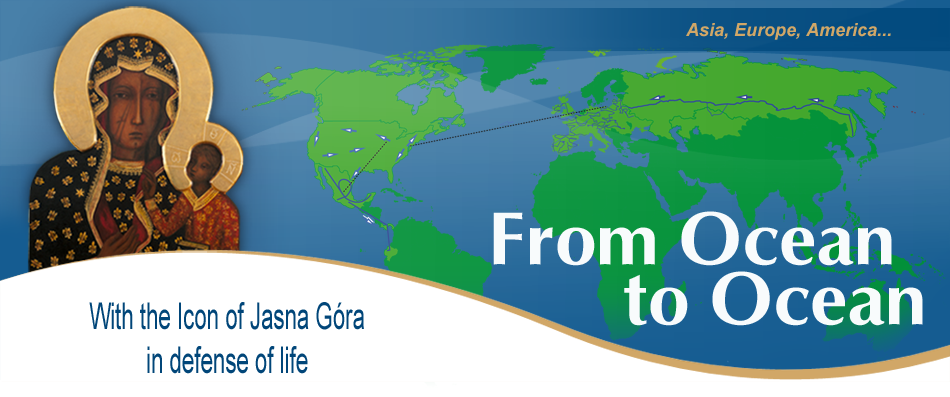The Czestochowa Icon has been under the care of the Pauline Order at Jasna Gora (Bright Hill) in Czestochowa since the 14th century. It is also closely connected with the history of that Order, which was founded in Hungary.
The first founder of a men's monastery in Hungary, eventually the Pauline Fathers, was Bartlomiej (Bartholomew), Bishop of Pecs in the 13th century. At the same time, another monastery was founded on the initiative of Blessed Eusebius. The cult of the Mother of God, the special patroness of Hungary, was very close to him, which is reflected as the essential feature of Pauline spirituality. In 1250, both monastic communities were merged in Pecs. They adopted the rule of Bishop Bartholomew and elected Eusebius as their superior. At a chapter in 1263, that community received the official title of the Order of St. Paul the First Hermit, known today as the Order of Paulines.
The main Pauline monastery, the convent of St. Lawrence outside of Buda, was referred to as In Claro Monte Budensi, or Bright Mountain Outside of Buda, since that monastery was located on a bright limestone hill 293 meters above sea level. That name was brought to the Polish Pauline monastery in Czestochowa.
On the southeastern slope of Gellert Hill near Pecs the so-called grotto of St. Ivan, hermit and eremite, is located. In 1924, when it became possible for the Paulines to return to Hungary, the Pauline Brothers decided to remodel the grotto of St. Ivan in order to make a covered chapel. It was significantly expanded, as a result of which an underground church was built and dedicated in 1926. Five years later construction began on a monastery on the eastern side of Gellert Hill along the banks of the Danube. This monastery was closed down in 1951, during the period of persecution of Catholics by the communist regime, and the Paulines were all arrested and their property expropriated. The superior of the Order was sentenced to death on charges of anti-state activity and the remaining monks were sentenced to 10 years imprisonment. From above the doors leading into the chapel, a wooden cross that had hung there since 1936 was removed and the entire entrance to the grotto was walled in with concrete blocks 2.25 meters thick. The chapel remained closed until after the political changes in 1989.
During the pilgrimage "From Ocean to Ocean" in defense of life through Hungary, the
Blessed Mother met Pauline Fathers and most frequently walked in their footsteps, since many of their excellent monasteries remain in ruins. Most tragic results came from the defeat of the Hungarian military outside of Mohacs in 1526. At that time, Moslems destroyed dozens of Pauline monasteries, burned archives and libraries, and martyred many religious. The remainder was destroyed when the Reformation came to Hungary with full sharpness, which the Paulines decisively opposed. The residence of the General of the Order was first moved to Lepoglava and then to Maria Thall, in Hungarian Mariavolgy (currently Marianka in Slovakia). In 1786, together with other religious communities, the Hungarian Paulines were dissolved by decree of Austro-Hungarian Emperor Josef II. At the end of the 18th and in the 19th centuries only two active monasteries of Paulines remained, both in Poland: at Jasna Gora and in Krakow. Our Lady, in the Czestochowa Icon, visited both places during the pilgrimage "From Ocean to Ocean".
During her visit to Hungary, the Czestochowa Icon of Our Lady visited Mohacs, Pecs, and other cities connected with the Pauline Order.
Mass in the presence of the Czestochowa Icon was celebrated in the ruins of the first Pauline monastery of St. Lawrence in Buda by Janos Szekely, auxiliary bishop of the Archdiocese of Esztergom and Budapest with Pauline Father Barnabas Balla concelebrating. A large sign with the words "Amnesty for Us--Amnesty for our Children. Peace in the wombs of mothers." was placed in front of the altar at the ruins of the monastery.







